 |
 |
 |
| St. James in Louth, the tower, 2010 | The tower in 2018 |
 |
 |
 |
| St. James in Louth, the tower, 2010 | The tower in 2018 |
St. James's at Louth is a huge church for the size of the town and has many features of note. At 295 feet, St. James's has the highest medieval spire in the country. Only the much more modern St Walburge's spire in Preston at 309 feet beats it for a church but both are topped by Salisbury Cathedral at 404 feet, Liverpool Cathedral at 331 feet and Norwich Cathedral at 315 feet. Lincoln Cathedral is now only 292 feet high but it was the tallest building in the world from 1311 to 1549 with a spire reaching to 524; it toppled in a storm and was never replaced.
The earliest documentary evidence for a church on the site is in a Lincoln Cathedral charter dating from about 1200. However, it is thought that there was a church from as early as 792 which may have been dedicated to St. Herefrith.
The Norman church was dated from the 12th century and was rebuilt first in 1247. It was rebuilt again in 1447 re-using the five easternmost arches. There is a discontinuity between the main arcade and the tower suggesting that the tower was built separate from the tower and joined later. The tower was strengthened in 1499 preparatory to the construction of the spire between 1501 and 1515. The weathercock was made from a large copper bowl captured from the Scots at the Battle of Flodden on 9 September 1513 when King James IV of Scotland was killed. The spire was consecrated on 13 September 1515.
In response to Henry VIII's dissolution of the monasteries, there was the Lincolnshire Rising which started on 15 October 1536 at Louth. This was a precursor the Pilgrimage of Grace which was largely in northern England, particularly in Yorkshire between late 1536 and early 1537. The Lincolnshire Rising ended in March 1537 with the execution of the vicar of Louth, Thomas Kendal at Tyburn.
The spire was repaired in the 17th century in particular after the great storm of 1632. A new set of 8 bells was hung in 1726. A new weathercock was fitted in 1824 and a new clock was installed in 1815. The spire had to be repaired after it was struck by lightning in 1844. A major restoration of the church took place under the direction of the architect, James Fower in 1868/9. This included new choir stalls and the tiles in the nave.
 |
| The nave looking east |
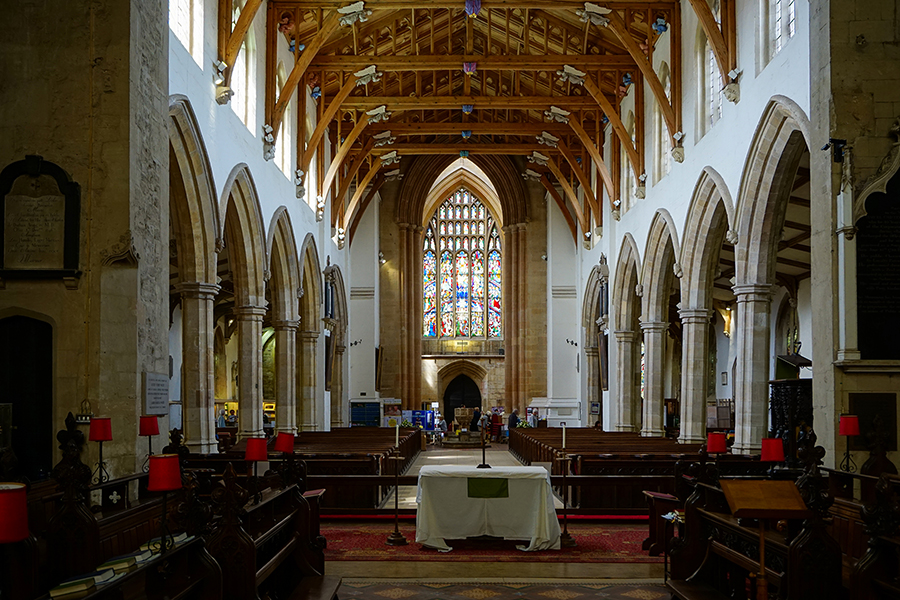 |
| Looking from the choir towards the West Window of 1874, designed by Cornelius Parker |
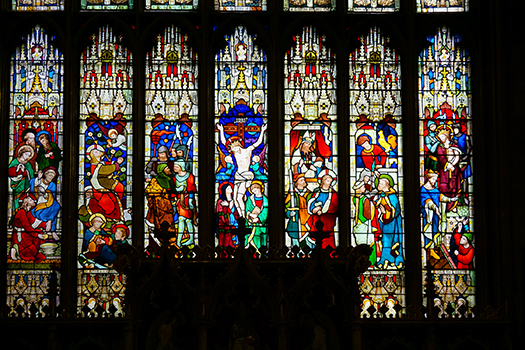 |
 |
|
| Details of East Window dating from 1861 | Under the tower | |
 |
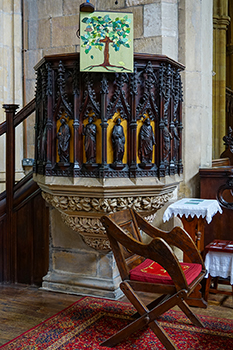 |
|
| Nave Ceiling, restored in 1825 | The Pulpit | |
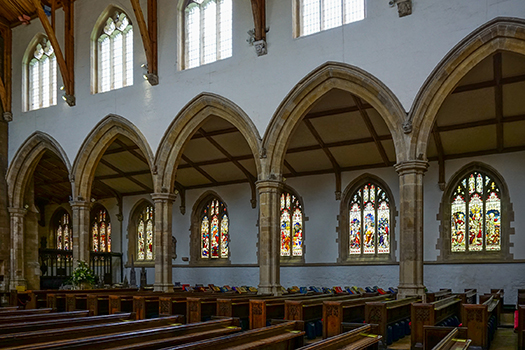 |
 |
|
| Arcade in the nave | Decorative floor tiles | |
 |
 |
|
| Panel on the Staffordshire alabaster font | West Entrance |
The town of Louth has been called the the Capital of the Lincolnshire Wolds. It lies where and ancient trackway along the Wolds, known as the Barton Street, crosses the River Lud. St. Helen's spring is dedicated to the mother of the Emperor Constantine but it is thought that in pagan times it was dedicated to the water goddess Alauna. There is evidence of Anglo-Saxon occuption in the area with a large cemetery dating from the 5th and 6th centuries. It has about 1200 urn burials. There was an abbey in the Anglo-Saxon period and AEthelhard, who became Archbishop of Canterbury in 793 had been an abbot at Louth. The town is mentione in the Domesday Survey of 1086 as having 124 households. A new abbey was founded in 1139 as a Cistercian daughter house from Fountains Abbey but only earthworks now remain.
Much of the town centre is 17th and 18th century with some fine Georgian houses. I show just a few pictures below of the many historic building
 |
 |
|
| House in Westgate | Mason Arms, Corn Market | |
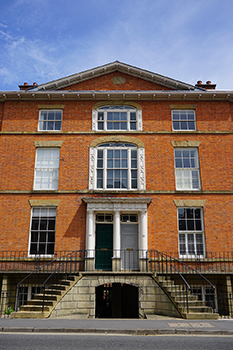 |
 |
|
| Bridge Street | Street Market |
'St. James, Louth', an illustrated booklet available in the church.
Wikipedia page for Louth